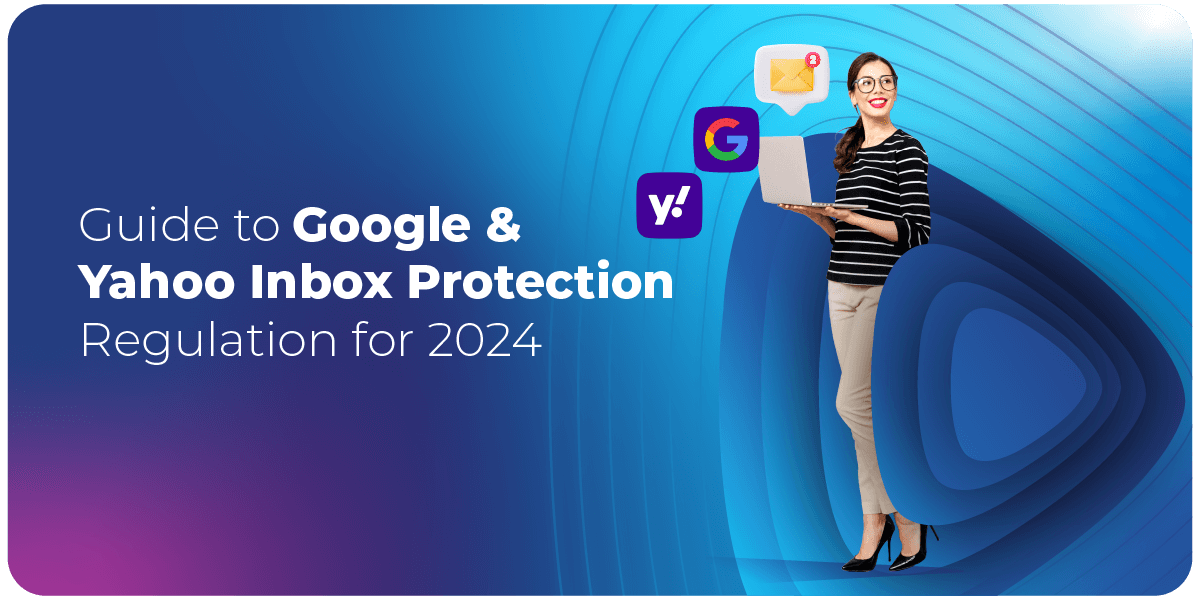Table of contents:

The efficacy of email as a marketing channel hinges on the overall inbox experience of our recipients. A surge in unwanted emails not only intensifies competition but also diminishes the likelihood of our carefully crafted messages being read.
Recent changes in the way mailbox providers handle unsolicited messages, notably announced by Gmail and Yahoo, have left marketers with pressing questions about the impact on their email programs and the necessary steps to stay compliant with evolving email regulations.
Gmail, which had already announced a cleanup of inactive accounts in May 2023, shared that enforcement would kick in by February 2024. They're keeping a close eye on senders who transmit more than 5000 messages a day. Yahoo echoed similar sentiments, aiming for enforcement in the first quarter of 2024.
Let's break down what these changes mean and how you can ensure compliance while maintaining your email marketing effectiveness.
Google/Yahoo Inbox Protection Regulations
Both Gmail and Yahoo have laid out three crucial changes for senders to prioritize to maintain their legitimacy:

1. Authenticate Your Emails:
It's time to verify your sender identities using standard protocols like SPF, DKIM, and DMARC. This ensures that your emails are viewed as reliable and authentic by mailbox providers and recipients alike.

2. Make Unsubscribing Easy
Implement a single-click unsubscribe link within your emails to allow recipients to opt out effortlessly. Respect their preferences and make it simple for them to manage their subscriptions.

3. Send Only Desired Emails:
Gmail and Yahoo are cracking down on spam, and you need to ensure your spam rate stays below the specified threshold of 0.03%. This means sending emails that recipients actually want to receive.
These regulations primarily impact bulk senders, categorized by Google as those who send 5000 or more messages to Gmail addresses on a daily basis. Remember, it's not just about sending 5000 messages each day; it's about your overall sending habits. Even if you don't consider yourself a bulk sender, mailbox providers might see you differently.
For Gmail users, signing up for Google Postmaster Tools is essential to monitor spam rates and take necessary actions to reduce them effectively.
General Best Practices for Both Platforms

1. Focus on Content Quality:
Craft engaging and relevant content that resonates with your audience. High-quality content reduces the risk of your emails being marked as spam.

2. Encourage User Engagement
Prompt recipients to interact with your emails through clicks and replies. Higher engagement rates contribute to a positive sender reputation and improved deliverability.

3. Conduct Regular Audits:
Regularly assess your email practices, including your sending infrastructure, authentication protocols, and compliance with platform-specific regulations. This proactive approach ensures sustained success in email delivery.
Conclusion:
By following these guidelines and actively engaging with platform-specific programs, you can navigate inbox protection regulations effectively. This not only enhances email security but also contributes to a more reliable and trustworthy email ecosystem for both senders and recipients. Stay informed, implement best practices, and keep adapting to ensure long-term success in bulk email delivery.
Remember, it's all about delivering value to your recipients while respecting their inbox preferences. Happy emailing!
Begin your journey with SendClean and witness your emails reaching new heights like never before!


